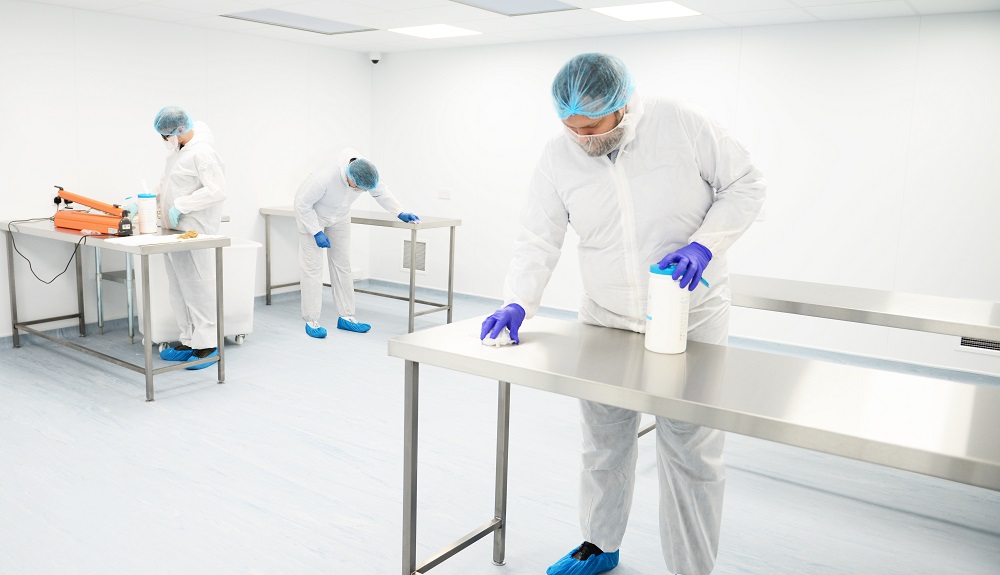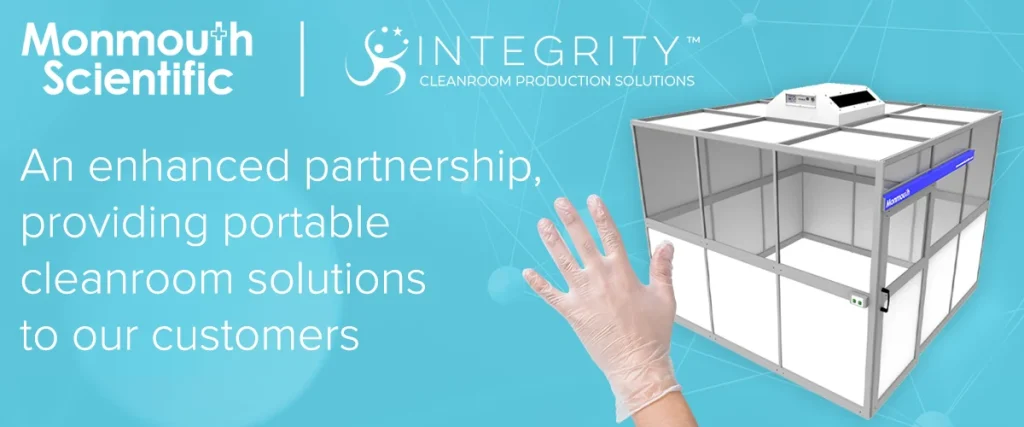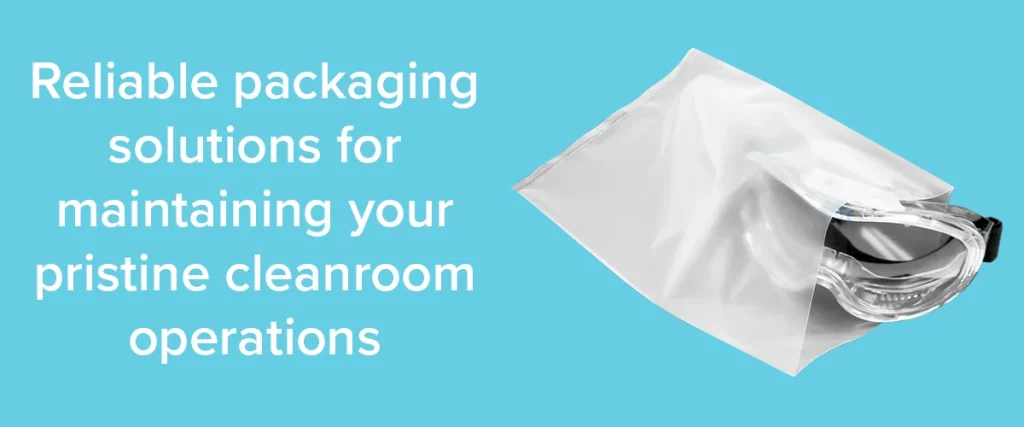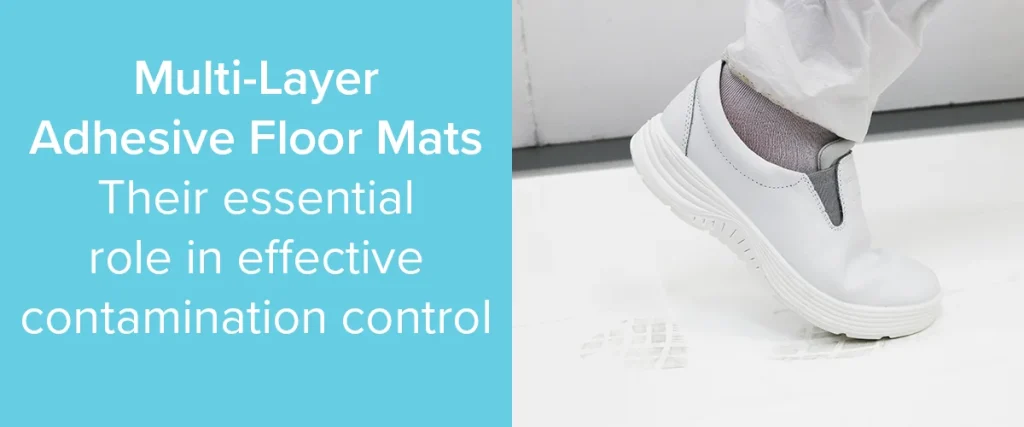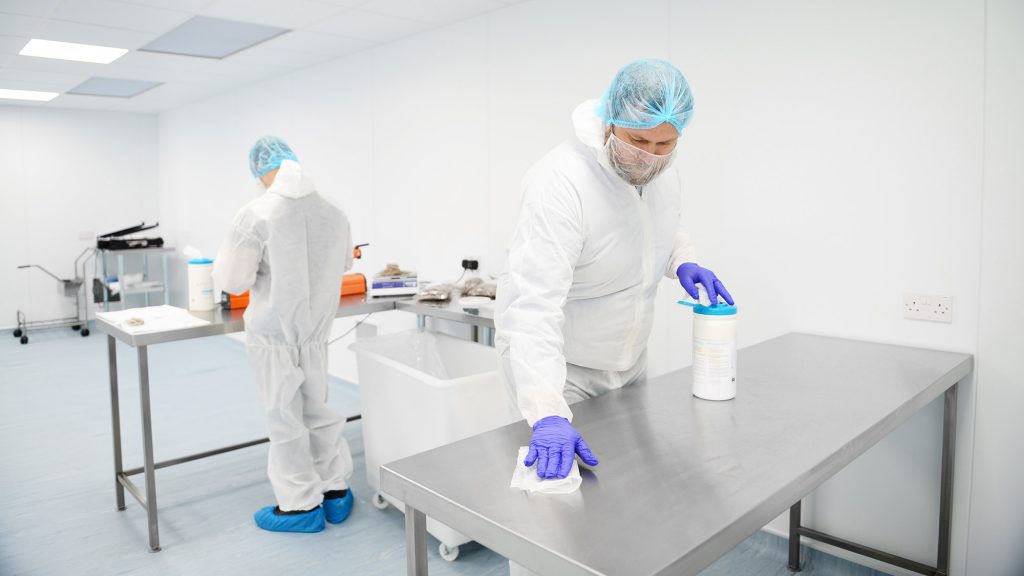The increase in use of cleanrooms in a greater variety of areas coupled with the continuing advances in hardware development and medical device technology, shows no sign of abating any time soon. The requirements for maintaining cleanliness in semiconductor fabrication cleanrooms, pharmaceutical manufacturing facilities and similar facilities, for example, are stringent. However, in some cleanroom environments, it is not only necessary to maintain a ‘clean environment’, but it is often also necessary to prevent static discharge.
Electrostatic discharge (ESD) as low as 30 volts can cause damage to components during the production process and disturb the balance of your cleanroom. One particularly significant problem is the fact that the average person will not sense a discharge of less than 3500 volts. Consequently, as many electronic devices can be damaged by potentials far lower than 3500 volts, such devices can be damaged unknowingly and incorporated into the final product. As a result, the final product will be defective, without anyone knowing it. This could be critical for patient and equipment safety in hospitals for example.
Protecting your cleanroom
Products brought into and used in cleanroom environments must be carefully designed and manufactured to avoid the risk of contamination as well as monitor and eliminate static or negative pressure within your critically controlled area. In semiconductor fabrication cleanrooms, for example, surfaces must be wiped frequently with low linting cleanroom wipes and cleaning solution in order to prevent contamination. Other examples of cleanroom products include antistatic flooring, antistatic sticky mats at the entrance to the cleanroom, antistatic clothing, disposable gloves, stainless steel cleaning equipment and stationery products (i.e., notebooks and writing instruments).
Rotational Cleaning
Rotational cleaning is the use of disinfectant in rotation, this controls the bioburden in the cleanroom. General guidelines on which chemicals should be used to clean a cleanroom are: an alcohol disinfectant, a general disinfectant and a sporicide.
Why use more than one disinfectant?
The simple answer is to stop resistance. Disinfectants are used to control the bioburden in the cleanroom as they contain properties that can kill micro-organisms. Using two different disinfectants will stop any resistance.
What disinfectants should I use to clean my cleanroom?
It is clear that using a sporicide is highly important, but agents that have sporicidal activity tend to be harsh and unacceptable for everyday use. For this reason it is recommended that a sporicide is used in rotation with another effective disinfectant that is more suitable for regular use. Therefore, for rotational cleaning, we would recommend OX and HA.
OX is a peracetic acid preparation (PAA) mixed with Hydrogen Peroxide (H202), this is one of the most effective sporicidal agents available in the disinfectant armoury. HA is a bactericidal, fungicidal and sporicidal. Using these disinfectants in rotation, will eliminate resistance. Using either the OX or HA for deep cleans, along with an alcohol based disinfectant (70% IPA) for regular cleans, will help with contamination control. DI water (de-ionised water) or WFI (Water for Injection), are two of the purest forms of water available and are also recommended for scrubbing of all surfaces, floors, walls and benches due to the absence of all positive and negative charge ions.
Antistatic Wipes
Using a low lint or lint free disposable which includes a woven conductive fibre allows you not only to clean, but helps to reduce the build-up of static electricity from a surface. The mechanical act of wiping a surface will remove a number of particles from that surface. If the wipe and surface are wet, this will break more of the bonds that hold particles to the surface and allow you to pick up many more particles. This is especially beneficial within an ESD (electrostatic discharge) environment as it is key not to build up a static charge which can damage sensitive equipment.
Antistatic wipes are safe to use, convenient, practical, quick and easy alternative to standard chemical products. Wet antistatic wipes contain a cleaning agent that quickly evaporates after use and is especially effective in cleaning cables and connectors.
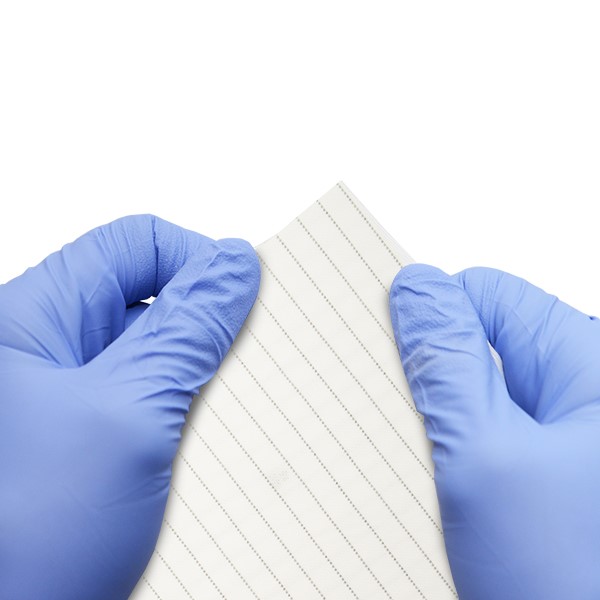
Cleaning ceilings
Tacky rollers with extended handles can make cleaning the ceilings much easier if you are required to wet wash the ceilings, another option is a flat mop with an extendable handle for mopping, or a pre-saturated wipe. Occasionally, vacuum systems equipped with HEPA filters are also used.
Cleaning walls: walls can all be cleaned using the above mentioned methods. However, hand wiping is often more effective. A lint free non woven wipe or a polyester knit wipe will work best because both are extremely low in particle generation and chemical extractables.
Cleaning surfaces: surfaces are typically cleaned by using impregnated wipes such as IPA or IMS. The same rules apply for cleaning floors as they do for the walls, a flat mop can be used or an edgeless cleanroom compatible string mop in conjunction with a mopping system. When using a mopping system this should be used with either DI water / WFI Water. DI Water is used because this has been filtered to 0.25 microns, alternatively WFI water can be used, tap water should not be used due to the high level of contaminates it contains.
 +44 (0)1473 836 205
+44 (0)1473 836 205


